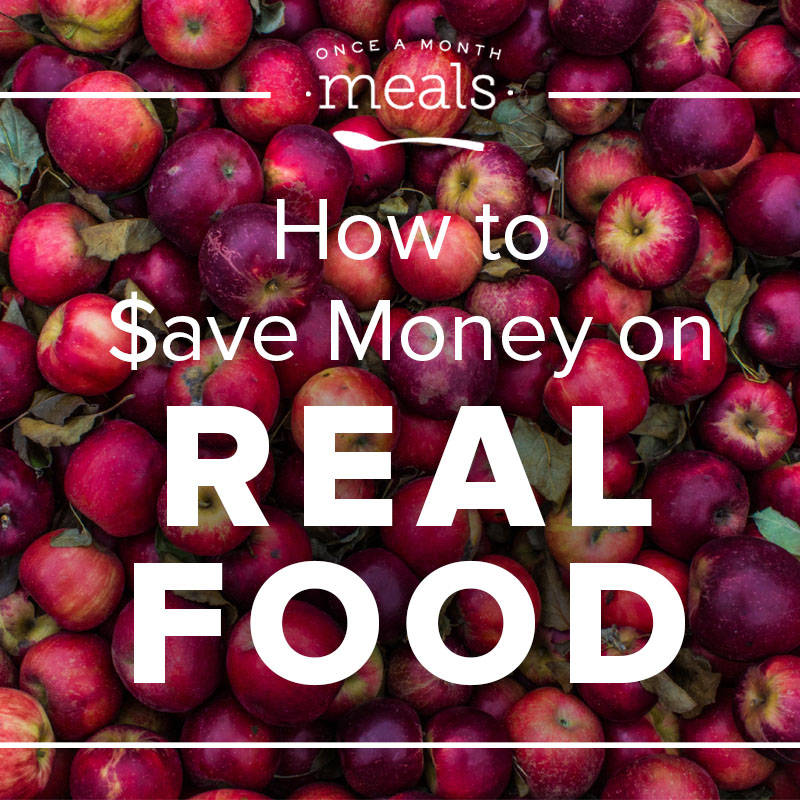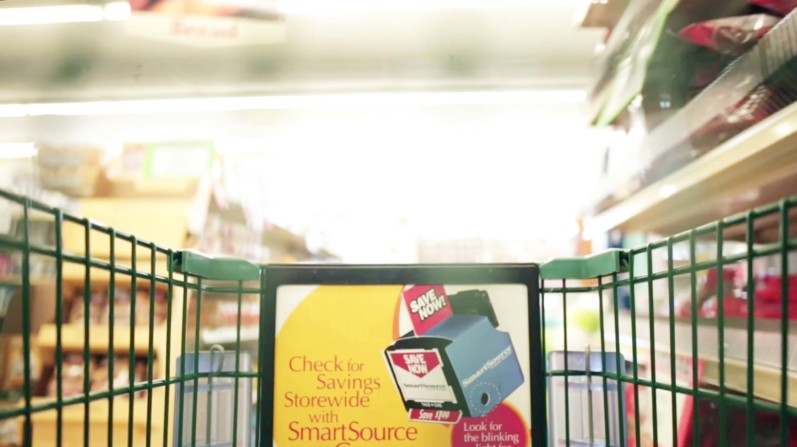
**This post is part of the Get Real series. Please remember that this is meant as a learning community. We know that many of you are passionate about what you do and we want you to express that, just please do so in a way that will be an encouragement and aid to others making a transition. We want this to be a “safe space” for participants to learn. For that reason, we reserve the right to delete any comments that are not handled in this manner.
How do we determine the ideal budget for our family? No family is alike.
When it comes to buying food, the factors that play into where we set our budget really vary.
Here are just a few you can ask yourself!
- How many people are in your family?
- What are their ages and are they big eaters? Are they young children who eat small amounts? Teenage boys who eat more than their dad? (Or in my case, itty bitty toddler girls who can out-eat their nursing mom?)
- Do you have any allergies or food restrictions? Gluten free, dairy free, nut allergies, GAPS, Paleo/Primal, etc.
- Where do you live? Big city? Out in the country? What is the cost of living like in your neck of the woods?
- What type of stores, farms, co-ops, markets, etc. do you have available to you?
- Is your budget amount limited by a sheer lack of funds? (i.e. there’s simply no extra money at all, so you are just scraping by on whatever you have)
- What are your family’s financial priorities?
These are just a few of the questions that we have to ask ourselves when we consider our budget. What works for my family won’t necessarily work for my best friend’s family, and what Jane “Real Food” Blogger spends on her frugal but nourishing groceries won’t necessarily be the right amount for you.
I love talking about ways to save money on nutritious, whole foods, but my goal isn’t to help families arrive at a certain dollar amount.
Rather, it’s to help them establish a comfortable budget that works with their specific situation and to show ways that they can shave off expenses and keep (or lower) that budget to the point where they want it.

The first step to save money on real food is to evaluate and change your current budget.
1. Know what you’re spending.
It’s hard to change anything or even set goals if you aren’t really sure what you’re working with in the first place. If you haven’t been sticking within a certain budget or tracking how much you spend each month, that’s the first place to start. If you use plastic for your shopping, you may be able to go back over your bank records for several months to add up your expenses. If not, then I suggest taking a couple of months to track everything that you spend, simply to have a starting place.
2. Analyze your current budget.
Would you just like to bring it a little lower? Or maybe it actually feels excessive or wasteful to you? Perhaps the amount is fine but you wonder if you might be able to purchase higher-quality foods if you used it more carefully? Are you trying to pay off debt or anticipating a decrease in income and need to drastically cut it down?
3. Create measurable goals.
Could you make a goal for gradually lowering the amount that you spend by slowly cutting the budget down little by little? One way to do this is to try giving yourself $25 or $50 less the next month. If you succeed in doing that, try lowering it by the same amount the next month. You will know when you hit the point at which the budget cannot be lowered anymore.
The second step to save money on real food is to make some practical changes.
1. Shop less often
Unless you are the most meticulous of list-makers, the more often you go shopping, the more you will spend. When you avoid the stores as much as possible, you learn to get by without, make creative substitutions, and work with what you have. When you frequent the store, you stumble upon all sorts of things you suddenly think you “need”. The stores are smart. They know how to convince us to want to buy things we don’t need.
2. Meal planning or once a month cooking
Most of you reading this are probably here at Once A Month Meals because you already do freezer cooking and menu planning to some degree, so you’re off to a great start! The more that you can incorporate really solid planning into your meal making, the more purposeful that you can be about your budget and shopping, and thus the more that you will save.
3. Shop like a star
If you already have a plan, then you can really maximize your shopping trips. Learn to work them around what you already have, use cash, pre-plan your entire month’s budget (or 2 weeks) before you spend any of it, then go to the store with a super-detailed list.
4. Stock your kitchen with bulk buys
This is particularly practical for those of you who are doing once a month cooking. I make use of a natural foods co-op for very large purchases of organic grains (25 or 50 lbs), beans and legumes (5-10 lbs), unrefined sugar and honey, and more. You’ll save so much money doing this, and then the only challenge is figuring out where to store it all.
5. Use leftovers to your advantage
Being intentional to use food I’ve already made helps me to stretch what I have further and reduce grocery waste.
6. Consider using coupons
Most of the real food items I buy can’t be bought with coupons, but a few of them can (for example, San-J fermented Tamari sauce, for which I frequently find coupons), as well as some household goods (garbage bags, light bulbs), skincare or beauty products, cleaning supplies, etc. Yes, even organic/natural products. Almost every Friday, you can find my Natural and Organic Coupons and Deals feature at Money Saving Mom, with coupon roundups, store scenarios, online deals, and whatever else I can find.
7. Make it yourself
Consider this example of the cost of bread. I can make allergy-friendly (wheat-free for our daughter) bread for less than $1 per loaf OR I can spend $2-3 (or more) for a loaf of quality organic wheat bread and a whopping $4-6 per loaf for my daughter’s needs. When I don’t make the time to bake, our bread costs add up quickly! Even if you don’t make everything from scratch – What? You aren’t Superwoman? – consider which items would give you the most benefit for your time, and choose to make those.
8. Take advantage of discounted foods
Whether it’s finding creative ways to use discounted produce or other near-expiration items (dairy, baked goods, etc.), you can shave a lot of money off your grocery bill by stopping by your store’s clearance bins first.
9. Set your priorities
I wish that I could buy 100% organic, sustainable, all-natural foods, but I can’t. Unless you have an unlimited budget, you’ll need to establish your grocery priorities. For me, meats, fats, and dairy are at the top of my list (because they’re at the top of the food chain). I stick to organic for fruits and vegetables in the Dirty Dozen. Beyond that, I do the very best I can, and always opt for real, whole foods (yes, even non-organic ones) above anything processed. Knowing my priorities helps me to relax and simply do the best I can with the money that I have.
More resources to help you save money on real food:
- The Nitty Gritty on the Real Food I Buy and Where I Buy It– Part 1 and Part 2.
- What I Would Feed my Family on $250 a Month
- How I Would Improve my $250 Budget Even More,
- “Eating From the Pantry and Freezer Challenge“
- Plan It, Don’t Panic: Everything You Need to Successfully Create and Use a Meal Plan
- Real Food on a Real Budget: How to Eat Healthy for Less.
Action Item:
- Evaluate your grocery budget. Set some goals for this next month for your whole foods grocery budget. List them here. And let’s try to hold each other accountable to those goals. As we approach the summer, we will hit the ground running with a solid plan and measurable ways to attain those goals together!
